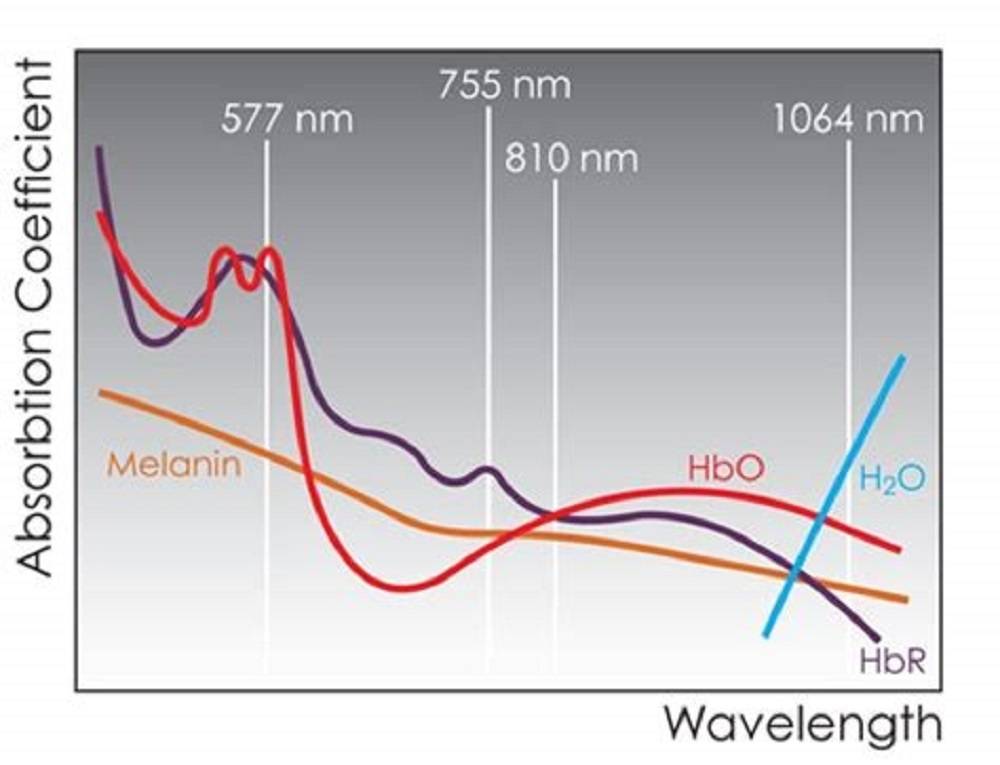Safe for All Skin Types
NO MATTER YOUR SKIN TYPE, PICOSURE WORKS SAFELY
Safe for All Skin Types
NO MATTER YOUR SKIN TYPE, PICOSURE WORKS SAFELY

Cutting to the Chase
People with darker skin types, Fitzpatrick 4-6, might be wondering if laser tattoo removal actually works for them, AND is safe. Many people believe that tattoos on people with darker skin types are harder to remove, while others have heard it will leave more visible scars. Here’s the truth.

Debunking the Internet
On the Internet, there are numerous examples of unfavorable scars from laser tattoo removal. However, each case should be evaluated in the context of what type of laser was used on the patient, how it was programmed, and how it was used. Medical grade lasers are extremely powerful and can result in unintended complications.
The key to safe and effective laser tattoo removal for people of ALL skin types is to pair the appropriate wave-length of light, the proper amount of energy, and the correct pulse duration with the patient’s tattoo pigment colors, while also adjusting for the skin type. Subtle differences in the distribution and characteristics of the melanin found in darker skin necessitates a different treatment approach than in lighter skin types.

Melanin is an efficient absorber of light and the box to the left shows how it (orange line) absorbs less of the 1064 nm light than it does the other wavelengths of energy typically used for laser tattoo removal. In layman’s terms, 1064 nm energy will cause less heat in the skin than 755 nm or 577 nm energy. It is the safest wavelength to use for tattoo removal in people with darker skin types.
Older nano-second lasers, such as the Q-switched YAG, also use 1064 nm energy, however, because these lasers are firing at such a slow rate (one-billionth-of- a-second), all of the energy is converted to heat. And, heat elevates the risk of scar, hyperpigmentation and hypopigmentation.
The PicoSure laser sends tiny pulses of powerful light, at a speed of one-trillionth-of-a-second, that creates shock waves to break up your tattoo ink. Although a small amount of heat is created, your skin remains relatively cool compared to what happens to your skin with an older, slower, nano-second-laser (Q-switched YAG laser).
The shock waves break up the tattoo pigment better than heat does.
Keep in mind that things like frosting, blistering, scabbing, swelling and itching are quite normal and will occur in all patients. Skin color does not have any bearing on pain levels, infection or muscle soreness either. With PicoSure™, pain levels are the same for patients of all skin types.
For tattoo removal patients with Fitzpatrick Type 4-6 skin, the three items of particular interest are scarring, hyperpigmentation and hypopigmentation. The risk of these complications is higher in darker skin individuals, however, the designers of the PicoSure laser had this in mind when they developed this versatile tattoo-removal-platform.
Scarring
With the recent technological and medical advances in laser tattoo removal, permanent scarring is rare and occurs in less than two per cent of cases. If scarring does happen, it usually is not as noticeable as the tattoo and can be minimized with massage and UV protection. Just make sure your skin has fully healed from the treatment before applying cosmetic products. In order to minimize the chance of scarring after treatment, drink plenty of water, get enough sleep each night and avoid tobacco products.
These measures will boost your body’s immune system and help the process of pigment elimination and skin repair. Also, try to avoid direct exposure to the sun; ultraviolet radiation can harm your skin’s pigmentation and increase the risk of scarring due to greater sensitivity. Keloid scars, which are raised, thickened areas of skin can appear up to three to six months after treatment, but these are very rare.
Hyperpigmentation
During laser removal, pulses of different light wavelengths are used to remove the tattoo ink. However, it can also affect your skin’s natural pigment or melanin. A consequence of this is known as hyperpigmentation, which are essentially patches of darkened skin. This condition, typically seen in people with darker skin and active tans, will usually resolve itself in several months.
Hypopigmentation
Conversely, hypopigmentation occurs when your skin’s normal pigmentation has been removed and lighter patches of skin will be visible where the tattoo once was. It can sometimes take months or even years for your skin’s pigment to appear normal again. For some people, it may never be the same. However, both hyperpigmentation and hypopigmentation are more tolerable than the actual tattoo.
THE TECHNOLOGY
ABOUT DR. WETHERINGTON

Dr. Wetherington is certified by the American Board of Plastic Surgery. He is a member of the American Society for Aesthetic Plastic Surgery and the American Society of Plastic Surgeons. He is a former President of the Georgia Society of Plastic Surgeons.

Debunking the Internet
On the Internet, there are numerous examples of unfavorable scars from laser tattoo removal. However, each case should be evaluated in the context of what type of laser was used on the patient, how it was programmed, and how it was used. Medical grade lasers are extremely powerful and can result in unintended complications.
The key to safe and effective laser tattoo removal for people of ALL skin types is to pair the appropriate wave-length of light, the proper amount of energy, and the correct pulse duration with the patient’s tattoo pigment colors, while also adjusting for the skin type. Subtle differences in the distribution and characteristics of the melanin found in darker skin necessitates a different treatment approach than in lighter skin types.

Melanin is an efficient absorber of light and the box to the left shows how it (orange line) absorbs less of the 1064 nm light than it does the other wavelengths of energy typically used for laser tattoo removal. In layman’s terms, 1064 nm energy will cause less heat in the skin than 755 nm or 577 nm energy. It is the safest wavelength to use for tattoo removal in people with darker skin types.
Older nano-second lasers, such as the Q-switched YAG, also use 1064 nm energy, however, because these lasers are firing at such a slow rate (one-billionth-of- a-second), all of the energy is converted to heat. And, heat elevates the risk of scar, hyperpigmentation and hypopigmentation.
The PicoSure laser sends tiny pulses of powerful light, at a speed of one-trillionth-of-a-second, that creates shock waves to break up your tattoo ink. Although a small amount of heat is created, your skin remains relatively cool compared to what happens to your skin with an older, slower, nano-second-laser (Q-switched YAG laser).
The shock waves break up the tattoo pigment better than heat does.
Keep in mind that things like frosting, blistering, scabbing, swelling and itching are quite normal and will occur in all patients. Skin color does not have any bearing on pain levels, infection or muscle soreness either. With PicoSure™, pain levels are the same for patients of all skin types.
For tattoo removal patients with Fitzpatrick Type 4-6 skin, the three items of particular interest are scarring, hyperpigmentation and hypopigmentation. The risk of these complications is higher in darker skin individuals, however, the designers of the PicoSure laser had this in mind when they developed this versatile tattoo-removal-platform.
Scarring
With the recent technological and medical advances in laser tattoo removal, permanent scarring is rare and occurs in less than two per cent of cases. If scarring does happen, it usually is not as noticeable as the tattoo and can be minimized with massage and UV protection. Just make sure your skin has fully healed from the treatment before applying cosmetic products. In order to minimize the chance of scarring after treatment, drink plenty of water, get enough sleep each night and avoid tobacco products.
These measures will boost your body’s immune system and help the process of pigment elimination and skin repair. Also, try to avoid direct exposure to the sun; ultraviolet radiation can harm your skin’s pigmentation and increase the risk of scarring due to greater sensitivity. Keloid scars, which are raised, thickened areas of skin can appear up to three to six months after treatment, but these are very rare.
Hyperpigmentation
During laser removal, pulses of different light wavelengths are used to remove the tattoo ink. However, it can also affect your skin’s natural pigment or melanin. A consequence of this is known as hyperpigmentation, which are essentially patches of darkened skin. This condition, typically seen in people with darker skin and active tans, will usually resolve itself in several months.
Hypopigmentation
Conversely, hypopigmentation occurs when your skin’s normal pigmentation has been removed and lighter patches of skin will be visible where the tattoo once was. It can sometimes take months or even years for your skin’s pigment to appear normal again. For some people, it may never be the same. However, both hyperpigmentation and hypopigmentation are more tolerable than the actual tattoo.
THE TECHNOLOGY
ABOUT DR. WETHERINGTON

Dr. Wetherington is certified by the American Board of Plastic Surgery. He is a member of the American Society for Aesthetic Plastic Surgery and the American Society of Plastic Surgeons. He is a former President of the Georgia Society of Plastic Surgeons.


